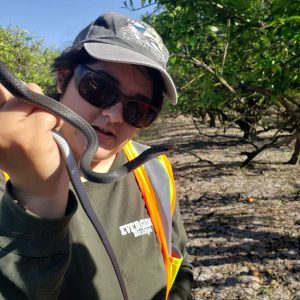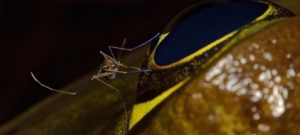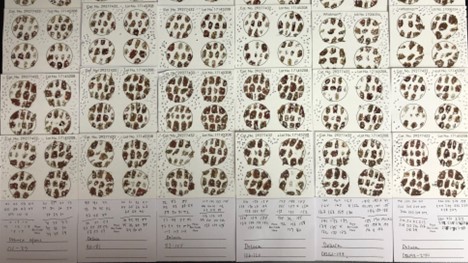Mosquitoes probably top the list of “most annoying wildlife” for people who enjoy the outdoors, but these creatures may soon become our allies in conserving biodiversity.
At the UF IFAS DeLuca Preserve scientists from the Department of Wildlife Ecology and Conservation and the Florida Medical Entomology Lab are simultaneously conducting detailed surveys of using conventional vertebrate sampling methods and collecting blood-fed mosquitoes from multiple habitats in a competition to see who detect more mammal, bird, amphibian and reptile species.
Why conduct this study?
In this era of rapid biodiversity loss, we need precise knowledge on what species live where, and how biological communities change through time. This information is necessary to assess species conservation status, monitor populations of invasive species, characterize response of ecosystems to global change, and to guide environmental

management and policies. Despite huge advances, such as high-resolution satellite and drone remote sensing techniques, we still need methods to identify and monitor species on the ground. Though it may appear to be a straightforward task, inventorying the biological diversity present at a location can entail tremendous effort.
Study Area
UF IFAS was gifted the DeLuca Preserve in Osceola County in 2020 for research and conservation use by Elisabeth DeLuca. The UF IFAS DeLuca Preserve is 27,000 acres and encompasses a wide array of habitats, including Florida scrub, pine forest, oak hammocks, wetlands, and citrus orchards.
Conventional Terrestrial Vertebrate Methods

Terrestrial vertebrates have different sizes, locomotion types, habitat preferences and activity schedules, therefore a wildlife researcher would need a diverse array of monitoring or detection techniques to get a representative picture of what species live at a site. Contemporary wildlife techniques for monitoring vertebrates include live traps for small mammals, in person surveys of birds, amphibians and reptiles, and camera traps to detect the medium and large (mostly nocturnal) mammals present at the site. This list represents the bare minimum; other techniques include automatic audio recorders to record bird, and amphibian species; and the use of mist nets to capture birds and bats.
Mosquito Blood Meal Analysis
What if we could survey all vertebrate groups with a single method? Here is where the mosquitoes might help. With more than 3,600 species, mosquitoes comprise a highly diverse group of insects, and dozens of species can live together within a particular ecosystem, with each of these species specializing in feeding on a particular group of hosts. There are mosquitoes that are experts at finding rodents in their burrows, others that will bug birds in their nests, and some even some feed exclusively on frogs. Mosquitoes are experts at finding their host animals, with experience dating back millions of years to at least the Jurassic. When a mosquito takes blood from a host animal, it flies off carrying with it the DNA of its host, though, because its blood meal is heavy, it does not fly far.

If we can capture these blood fed mosquitoes and identify the species from which they took their last meal, we can get a representative sample of the species present in an ecosystem. This is exactly what a group of researchers from the Florida Medical Entomological Lab is doing. They are using mosquito vacuums and other tools to capture thousands of blood fed mosquitoes, then, from these, they use DNA barcoding analysis on the mosquito blood meals to see whose blood is in the mosquito!
The competition
To assess if vertebrate detection and surveys through DNA from mosquito blood meals can be a useful tool in biodiversity monitoring, these entomologists have partnered with scientists in the Department of Wildlife Ecology and Conservation. With this partnership, the researchers are exploring how we can take advantage of mosquito blood feeding for the benefit of biodiversity conservation, and competing to see who can sample diversity better, entomologists or wildlife biologists.
With this work, scientists hope to develop a new tool for the toolbox of biologists who document biodiversity – an increasingly important task in this time of climate change and biodiversity loss. In addition, this research is providing insights and generating baseline data for the species living at the UF IFAS DeLuca Preserve, where Florida panthers, black bears, and spotted skunks among other wildlife species have been detected.


Results- still to come!
While the data are still being processed and the final results are pending, you can check for project updates and what the researchers were up to in the field on the project’s Twitter page (@BugsVBiologists).
Source: UF/IFAS Pest Alert
Note: All images and contents are the property of UF/IFAS.



